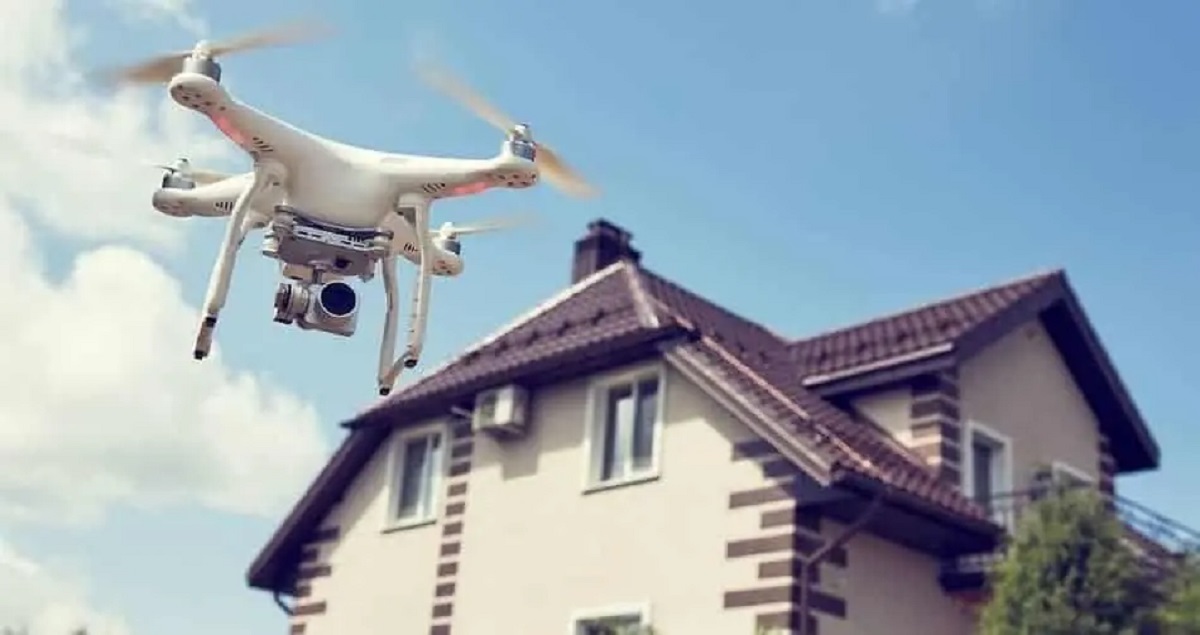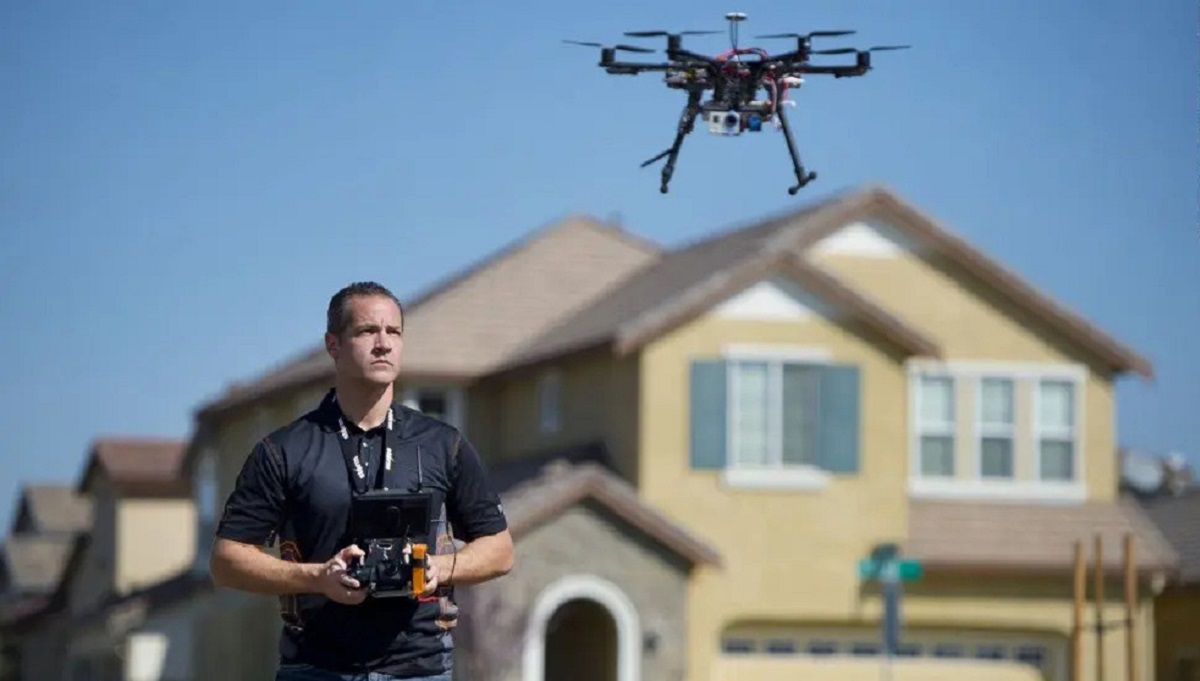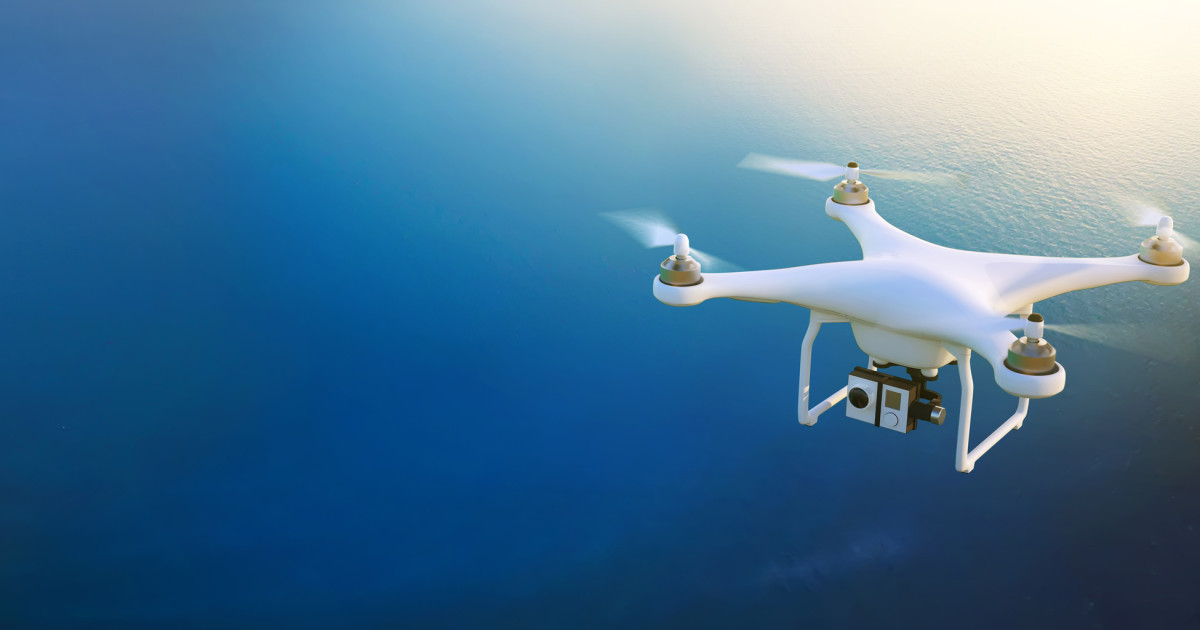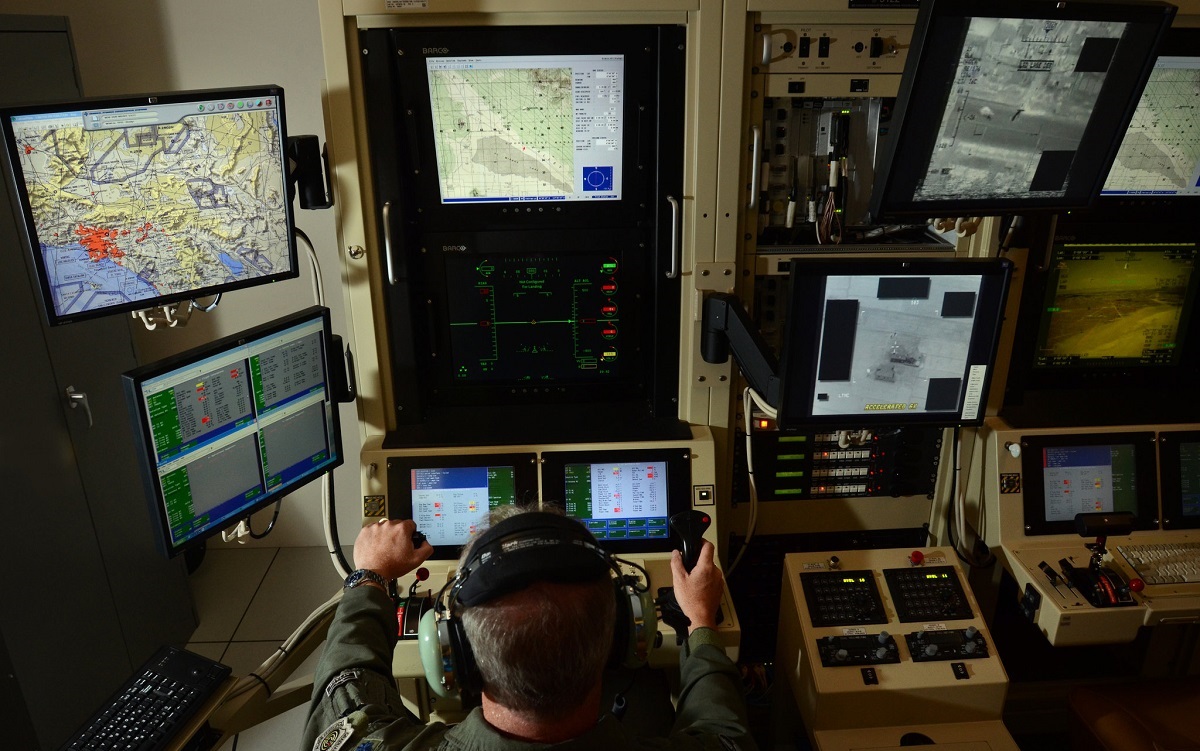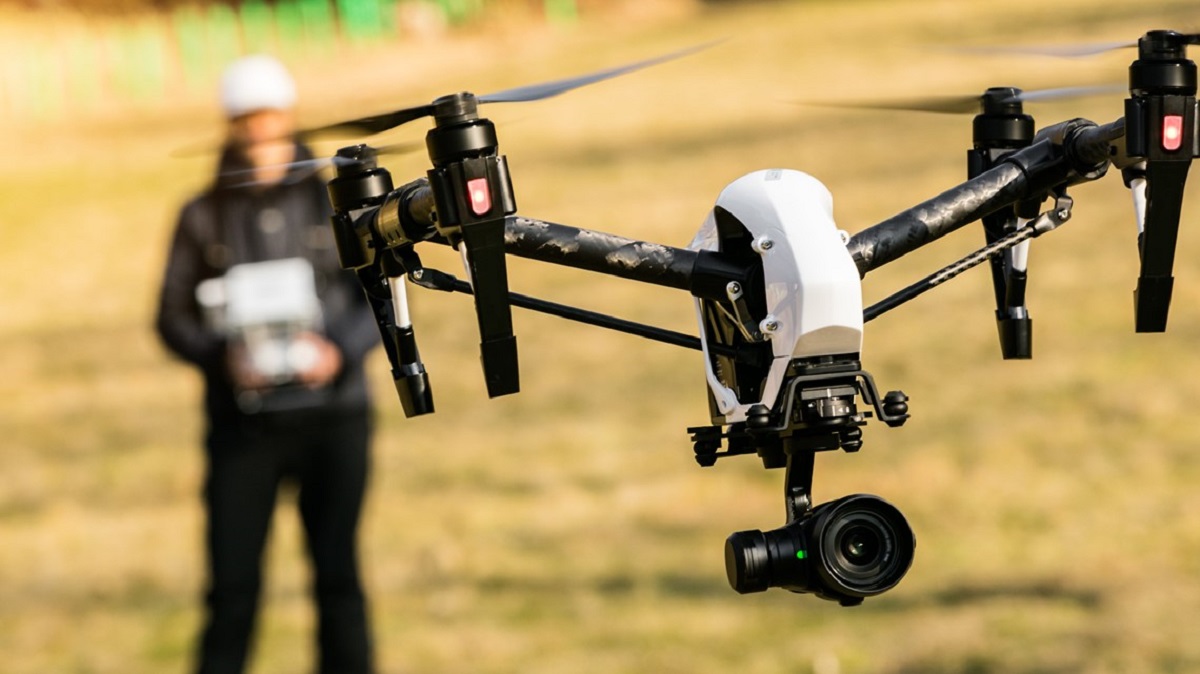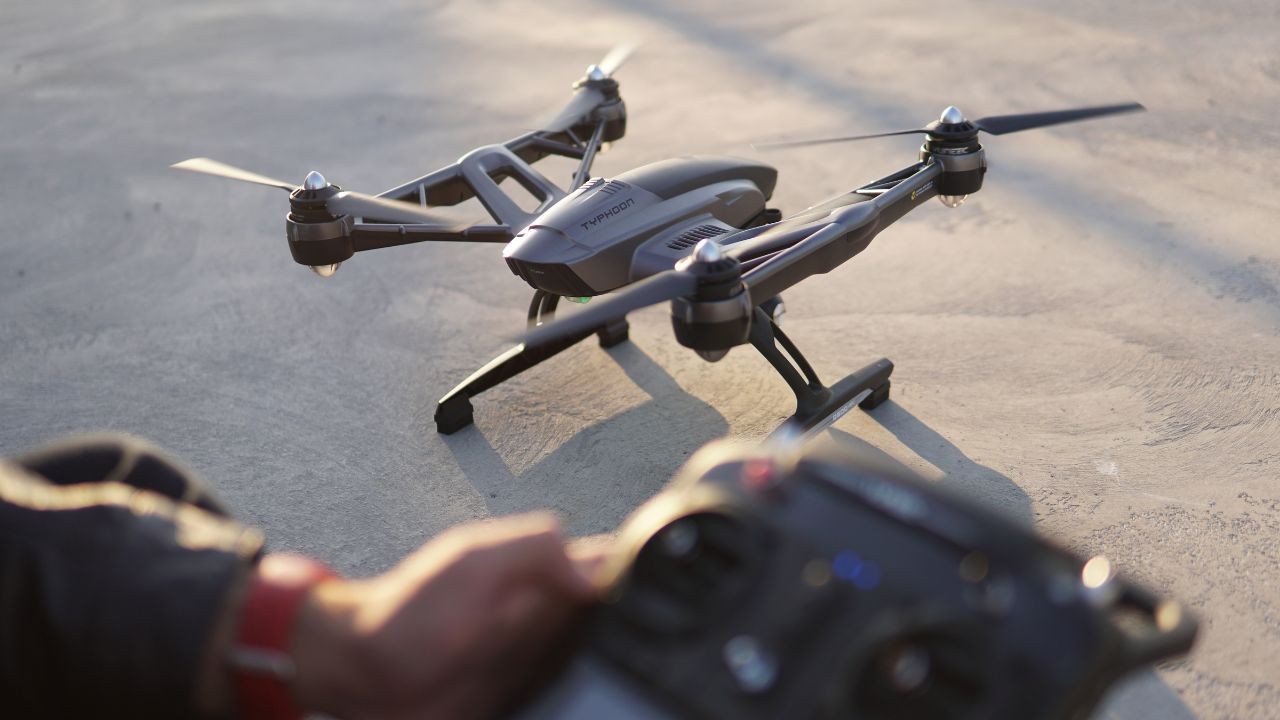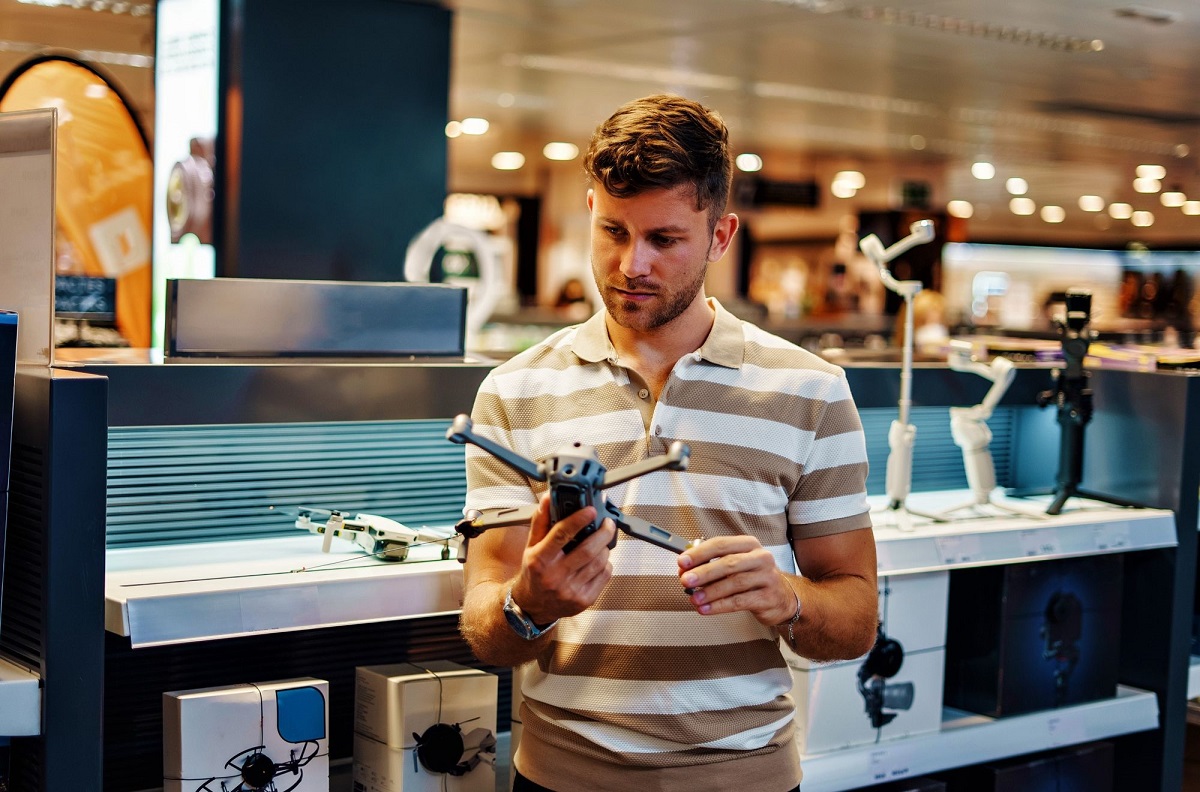Introduction
Technology continues to advance at a rapid pace, and one of the latest additions to the ever-growing list of innovations is the drone. These unmanned aerial vehicles have gained significant popularity in recent years, capturing the imagination of both hobbyists and professionals alike. Whether used for aerial photography, delivery services, or even recreational purposes, drones have become a common sight in our skies.
However, as drones become more prevalent, it is not uncommon to spot one hovering above your house. At first, you might be curious as to why it’s there and what its purpose could be. In this article, we will explore the reasons why a drone might be flying over your property and provide insights into the legalities and privacy concerns surrounding these airborne devices.
Understanding why there is a drone over your house starts with recognizing the increasing popularity of these devices. Drones have become incredibly accessible and affordable, making them accessible to a wide range of users, from amateur enthusiasts to professional users. The versatility of drones and their ability to capture stunning aerial footage have made them a favorite tool for photographers, filmmakers, and even real estate agents.
Moreover, drones have also found their way into various industries, from agriculture and construction to security and surveillance. They can be instrumental in monitoring crop health, inspecting infrastructure, and enhancing security measures. With such a wide range of applications, it’s no wonder that drones are taking to the skies more frequently.
However, the presence of a drone over your house can raise concerns about privacy and surveillance. As drones become more advanced, equipped with high-definition cameras and long-range capabilities, it’s natural to question the intentions of the drone operator and the extent to which your privacy may be compromised. It is important to understand your rights and the legal framework surrounding the use of drones to address these concerns properly.
In the following sections, we will explore the potential reasons for a drone over your house, delve into surveillance and privacy concerns, and discuss the legalities that govern drone operation. Additionally, we will provide guidance on how to deal with a drone over your property in order to protect your privacy and ensure a peaceful existence in this age of advancing technology.
The Increasing Popularity of Drones
The rise in popularity of drones is undeniable. What was once considered futuristic technology is now a common sight in our skies. The accessibility and affordability of drones have played a significant role in their widespread adoption.
Drones have come a long way since their inception. Originally used primarily for military purposes, they have evolved into versatile devices with diverse applications. Today, drones are used for aerial photography, videography, and even package delivery by companies like Amazon.
One of the key factors contributing to the popularity of drones is their accessibility. In the past, operating a drone required specialized skills and expensive equipment. However, technological advancements have made drones more user-friendly, with user-friendly controls and intuitive interfaces. Coupled with their affordability, this has opened up the world of drones to a much wider audience.
Drones have also become a favorite tool for photographers and filmmakers. Their ability to capture stunning aerial footage has revolutionized the way we capture and document our surroundings. From breathtaking landscapes to dynamic action shots, drones have enabled photographers and filmmakers to achieve shots that were once only possible with helicopters or cranes.
In addition to their creative applications, drones have found practical uses in various industries. For example, in agriculture, drones can be used to monitor crop health, identify potential issues, and optimize crop management strategies. In construction, drones can provide aerial surveys, monitor progress, and enhance safety measures. Even in the energy sector, drones are used for inspecting power lines and infrastructure.
Furthermore, the recreational aspect of drones cannot be overlooked. Hobbyists and enthusiasts are taking to the skies to enjoy the thrill of flying drones, participating in races, and exploring adventurous maneuvering. This has fueled a community of drone enthusiasts who share their experiences, tips, and tricks through online forums and social media platforms.
The increasing popularity of drones is evident not just in consumer demand but also in the rapid growth of the drone industry. From drone manufacturers to drone training schools, the industry has experienced significant growth in recent years. This growth has also attracted investments, leading to further advancement in drone technology and capabilities.
As the popularity of drones continues to soar, it is essential to understand the various reasons why a drone might be flying over your house. In the next sections, we will explore some of the potential reasons for a drone’s presence, including both benign and concerning factors, and delve into the surveillance and privacy concerns that come along with drones.
Potential Reasons for a Drone Over Your House
When you spot a drone hovering above your house, it’s natural to wonder why it’s there and what its purpose might be. There are several potential explanations for the presence of a drone over your property, ranging from harmless and innocent to more concerning factors.
One of the most common reasons is recreational use. Drones have become a popular hobby for many enthusiasts who enjoy flying them for fun and capturing aerial footage. It’s possible that someone in your neighborhood is simply enjoying their drone and exploring the skies around your area. This is usually harmless and shouldn’t raise any immediate concerns.
Another possibility is that a professional or commercial operator is conducting aerial photography or videography. Drones provide a unique perspective and are often used by photographers and filmmakers to capture stunning images and footage for various purposes. Whether it’s for a real estate listing, a film production, or simply artistic exploration, the drone operator may be capturing aerial shots near your house as part of their project.
In some cases, a drone might be conducting inspections or surveys. For example, utility companies may use drones to inspect power lines and infrastructure for maintenance and safety purposes. Similarly, construction companies may deploy drones to monitor progress, conduct aerial surveys, and ensure compliance with building regulations. These activities are typically part of operational procedures and may be temporary in nature.
However, it’s important to acknowledge that there may be more concerning reasons for a drone’s presence as well. Unfortunately, drones can be misused for malicious purposes, such as spying or conducting unauthorized surveillance. It’s crucial to differentiate between legitimate activities and potential privacy infringements. If you have reasons to suspect that a drone is gathering private information or violating your privacy, it’s essential to take appropriate steps to address such concerns.
Understanding the reasons behind a drone over your house can help you determine whether it’s an innocent and harmless situation or requires further attention. In the next sections, we will delve deeper into the surveillance and privacy concerns associated with drones and explore the legalities surrounding their operation.
Surveillance and Privacy Concerns
The increasing prevalence of drones has brought about legitimate concerns regarding surveillance and privacy. With their ability to capture high-definition footage and fly in areas that were once difficult to access, drones have raised questions about the boundaries of personal space and privacy.
One of the main concerns is the potential for unauthorized surveillance. Drones equipped with cameras can easily capture images and videos of private properties, including homes, gardens, and outdoor spaces. This intrusion into personal privacy can be unsettling, as individuals may feel their privacy has been violated and their activities monitored without consent.
Another aspect of surveillance concerns is the potential for voyeurism and the capture of intimate moments. The ease with which drones can fly quietly and discreetly has led to incidents of drones being used for peeping into windows or invading individuals’ private spaces. Such actions are not only invasive but also illegal.
Privacy concerns also extend beyond the residential setting. Drones flying near commercial and public spaces can capture sensitive information and compromise the privacy of individuals in those areas. For example, drones equipped with cameras can potentially capture personal data, including credit card information, as individuals enter or exit buildings.
In response to these concerns, many countries have implemented regulations regarding drone operations to protect privacy rights. These regulations often include restrictions on flying near private properties, height limits, and requirements for explicit consent for aerial surveillance.
Additionally, technologies like geofencing have been developed to create virtual boundaries that prevent drones from entering restricted areas, such as airports, government facilities, or private properties where their presence is not desired.
It’s crucial for drone operators to understand and abide by these regulations to ensure they are operating within legal boundaries and respecting the privacy of others. However, it’s equally important for individuals to be aware of their rights and take appropriate action if they suspect their privacy has been violated by a drone.
If you encounter a drone that you believe is invading your privacy, it’s advisable to document the incident by taking photos or videos as evidence. You should also report the incident to local authorities or regulatory agencies, providing them with any information that can help identify the drone and its operator.
In the next section, we will explore the legalities surrounding the operation of drones and the rights and responsibilities of both drone operators and individuals. Understanding the legal framework is essential in addressing and resolving surveillance and privacy concerns associated with drones.
The Legalities Surrounding Drones
The rapid growth in the use of drones has prompted governments around the world to establish regulations that govern their operation. These regulations aim to strike a balance between allowing the benefits of drone technology and addressing concerns related to safety, privacy, and public interest.
The specifics of drone regulations vary from country to country, so it’s important for both drone operators and individuals to familiarize themselves with the laws and guidelines in their respective jurisdictions.
One key aspect of drone regulation is the requirement for registration. Many countries have introduced registration systems to ensure that drones are traceable and that operators can be held accountable for their actions. This allows authorities to identify drone owners in case of any incidents or violations.
In addition to registration, drone operators are often required to adhere to specific flight rules. These rules typically include restrictions on flying in certain airspace, maximum altitude limits, and prohibiting the operation of drones near airports or other sensitive areas. Violating these rules can lead to fines, legal consequences, and potential damage to the reputation of the drone operator.
Privacy concerns have also prompted regulations regarding drone surveillance. Some countries require explicit consent from individuals before using drones for aerial surveillance, while others prohibit capturing images or videos of private properties without prior permission. Understanding these regulations is crucial for both operators and individuals to respect privacy rights and avoid legal issues.
Another legal consideration is the commercial use of drones. In many countries, operating a drone for commercial purposes, such as aerial photography or package delivery, requires obtaining specific licenses or certifications. These regulations are in place to ensure that commercial drone operations are conducted safely and professionally.
It’s important to note that while regulations exist, enforcement can be a challenge, especially in cases of unauthorized or malicious drone activity. This is why it is essential for individuals to be vigilant and report any incidents of concern promptly to the appropriate authorities.
As drone technology continues to evolve, regulations may also adapt to address emerging challenges and concerns. It is crucial for both drone operators and individuals to stay informed about any updates or changes in the legal landscape surrounding drone operations.
By adhering to the legal requirements and respecting privacy rights, drone operators can ensure safe and responsible use of their devices. Similarly, individuals can protect their privacy and raise awareness about any potential violations or concerns related to drone activity in their vicinity.
In the next section, we will provide some practical steps that individuals can take if they encounter a drone flying over their property, helping them deal with the situation effectively while safeguarding their privacy and rights.
Steps for Dealing with a Drone Over Your Property
Encountering a drone flying over your property can raise concerns about privacy and safety. While it’s important to approach the situation cautiously, there are steps you can take to address the issue effectively and protect your rights.
1. Assess the situation: Take a moment to observe the drone and assess its behavior. Is it flying too close to your property? Is it hovering for an extended period? Understanding the drone’s actions can help determine if further action is necessary.
2. Document the incident: If you believe the drone’s presence may be a violation of your privacy, gather evidence by taking photos or videos of the drone as well as any identifying features or markings. This documentation can be crucial if you decide to report the incident.
3. Identify the operator: Look for any visible markings or a registration number on the drone. If possible, try to locate the operator nearby. Approach them calmly and inquire about the purpose of their drone flying over your property. Engage in a respectful conversation to gather more information.
4. Contact local authorities: If you have concerns about privacy invasion or if the drone operator is acting suspiciously, contact your local law enforcement or aviation authority. Provide them with any evidence or information you have gathered, including the drone’s description, flight patterns, and the operator’s details if available.
5. Know your rights: Familiarize yourself with the drone regulations and privacy laws in your jurisdiction. Understanding your rights can help you address the situation more effectively and act within the legal framework.
6. Install privacy measures: Consider taking proactive steps to protect your privacy, such as installing privacy fences or curtains. These measures can help minimize the risk of unwarranted drone surveillance and provide peace of mind.
7. Join local community groups: Engage with local community groups or associations that focus on drone-related issues. These groups can provide valuable support, advice, and advocacy regarding drone regulations and privacy concerns.
8. Stay informed: Keep up-to-date with developments in drone regulations and privacy laws. Laws regarding drones are continually evolving, and staying informed will help you make informed decisions and take appropriate action if necessary.
Remember, it’s essential to approach the situation calmly and rationally. While some drone activity may be innocent, it’s crucial to be vigilant about potential privacy infringements and take appropriate actions to protect your rights and the privacy of your property.
In the following section, we will conclude our discussion and summarize the key points discussed in this article.
Conclusion
Drones have become increasingly common in our skies, and it’s not unusual to spot one flying over your house. Understanding the reasons behind their presence and addressing any concerns is crucial in today’s age of advancing technology.
In this article, we explored the increasing popularity of drones and the various reasons why a drone might be flying over your property. From recreational use and aerial photography to inspections and potential privacy violations, there are multiple factors to consider.
We also delved into the surveillance and privacy concerns associated with drones. While drones offer incredible capabilities, their ability to capture images and videos raises valid privacy concerns. It’s important to understand the legalities surrounding drone operation and be aware of your rights when it comes to privacy infringement.
We provided practical steps for dealing with a drone over your property, including documenting the incident, identifying the operator, and contacting local authorities if necessary. Understanding and adhering to drone regulations is essential for both operators and individuals to ensure a safe and respectful coexistence.
As technology continues to advance, drone regulations may evolve as well. Staying informed about the changing legal landscape and being vigilant about privacy concerns will help protect your rights and maintain a sense of privacy in the face of ever-present drones.
Remember, drones can serve various purposes. While some sightings may be harmless and innocent, it’s crucial to be alert and address any potential violations of privacy promptly. By doing so, we can foster a society where the benefits of drone technology are enjoyed responsibly and privacy rights are respected.







